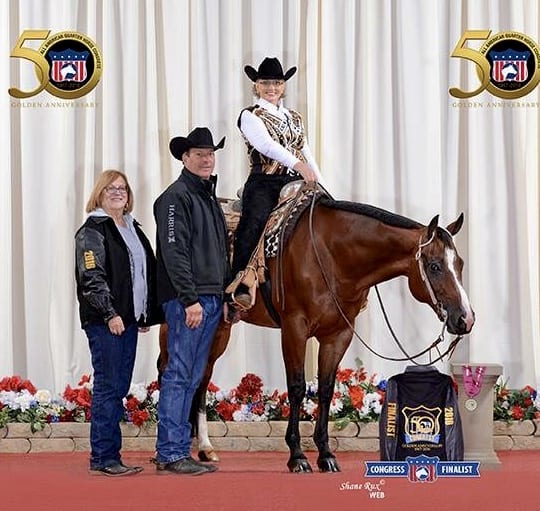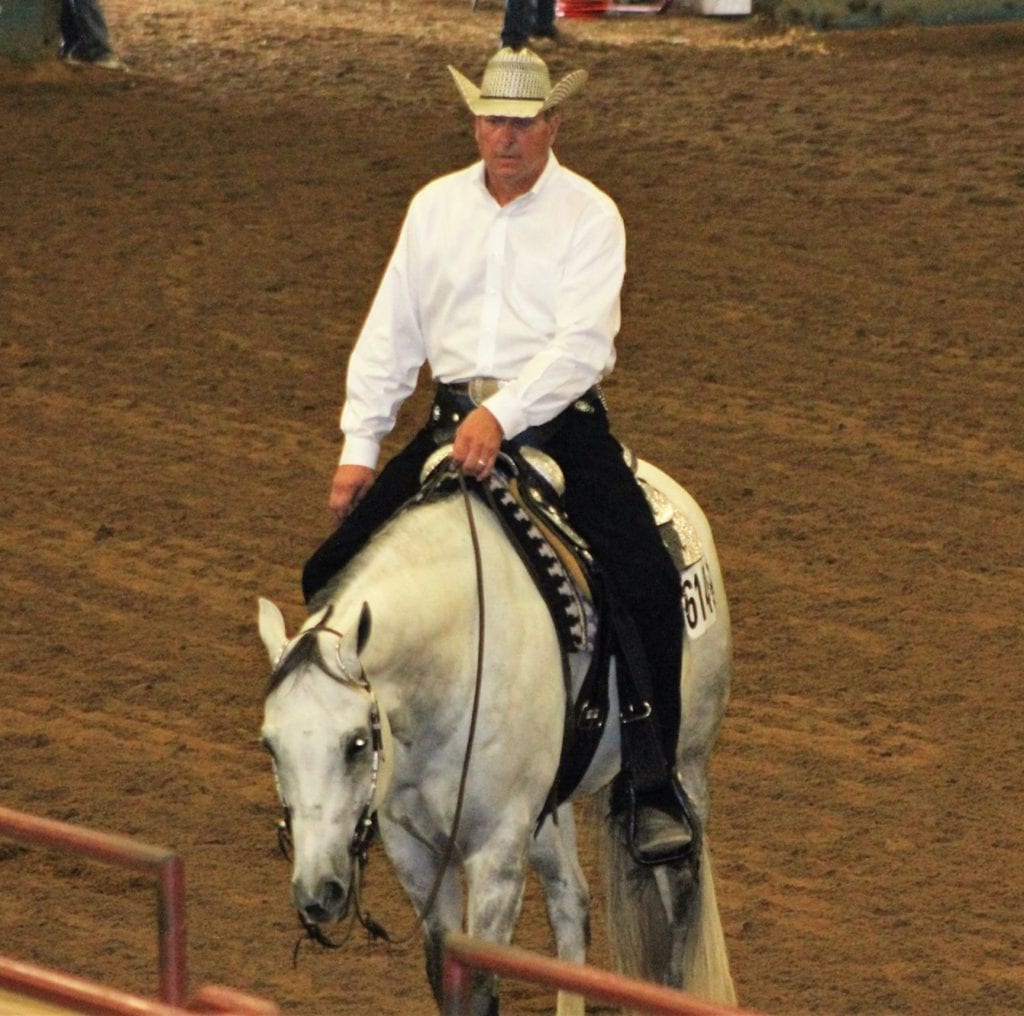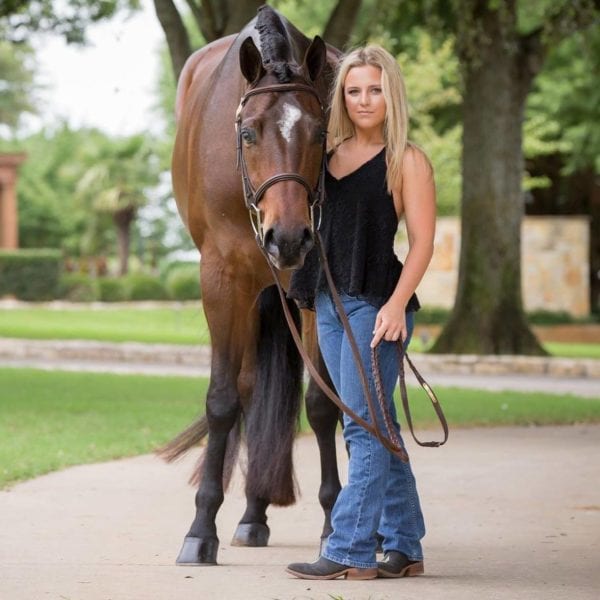Have you ever seen an Olympic gymnast who is 6′ tall? How about a college basketball star under 5′? Even though showing horses is by nature a physical sport, your overall height and body type don’t play much of a role in your ability to compete.
This is why you’ll see champions and leading riders in every possible shape and size. What it comes down to is figuring out how to get the job done no matter what you’re working with regarding the height department.
We spoke with AQHA Professional Horseman, Rick Baker and well-known Amateur exhibitor, Shelby Ratliff to get some tips on what you can do if you were born on either the short or the tall side of things.
Short Stuff with Shelby Ratliff
Being tall gives riders a pretty significant advantage regarding making horses move correctly. However, the upside to being short is that, unlike the tall rider, a shorter equestrian can make a wider variety of mounts work. Ratliff, who is five feet tall on the dot, enthuses, “I never, ever have an issue finding a horse big enough for me. I feel like when you’re short, you can also make them look bigger. However, the downside to this is that when I get a huge horse, I feel like I look like a youth when showing in the amateur division.”
Likewise, short-legged riders are less apt to fall into the pitfall of relying on their feet or spurs to achieve forward motion and lift.
For both hunter under saddle and western pleasure, your goal is to have a horse that exhibits proper self-carriage and is working in a soft, balanced frame. To achieve this lift and maintain it, a good strategy for a shorter rider is to get your horse attuned, maybe even overly so, to your aids, so that the horse isn’t reliant on either your leg or your hand.
If you’re a non-pro, this means having a plan with your trainer as far as how to make sure your horse will be equally responsive to your aids as well as theirs.
 Ratliff states, “I’ve never had an issue with trainer’s leg length versus my legs when riding, which I think is because Beth Case does such a good job training them that it doesn’t matter your leg length. However, back in my youth days when I was even shorter, I do remember Charlie Cole riding in my saddle at my stirrup length. Honestly, I think the stirrup thing is still a common thing. You see trainers riding in their clients’ stirrups all the time.”
Ratliff states, “I’ve never had an issue with trainer’s leg length versus my legs when riding, which I think is because Beth Case does such a good job training them that it doesn’t matter your leg length. However, back in my youth days when I was even shorter, I do remember Charlie Cole riding in my saddle at my stirrup length. Honestly, I think the stirrup thing is still a common thing. You see trainers riding in their clients’ stirrups all the time.”
Another consideration for short equestrians is making sure tack and clothing fits correctly and contributes to a better ride and look. Ratliff admits, “Tack is always a challenge for me, there are only a few saddles at Highpoint that will go short enough for my legs. If you end up with a saddle that is barely short enough, it makes it hard to ride.”
As far as showing, Ratliff mentions, “Another issue I’ve had was finding boots short enough.” While boots may seem like a superficial concern, the point at which a field boot hits your leg can make or break how you look while riding.
Ratliff shares, “I never got custom boots, so we just had to search and search until we finally found some that fit my leg length and were not over my knees. I was about 13 when I got my boots, and they’re the same ones I wear today.”
Takeaways for the short stacks among us: Mind your stirrups. It’s okay to ride in extra-long stirrups once in a while if you don’t grab the work saddle that fits you, but you need to make sure your stirrups are short enough. Riding in stirrups that are too long, especially for hunt seat, will affect your balance which will, in turn, impact your horse’s movement. A petite rider should also keep in mind that you might have less leg to push your horse forward with, so having your horse well-adjusted to your cues is vital.
Riding Tall with Rick Baker
 According to Baker, who sticks at a lofty 6’4″ tall, “There are more pros (to being tall) than there are cons. The simple fact is that when you have long legs, you can get underneath your horse and make it work. Just think about Gil Galyean, Cleve Wells, all of those guys along with Mike Carter, Bruce Vickery and Dale Livingston.”
According to Baker, who sticks at a lofty 6’4″ tall, “There are more pros (to being tall) than there are cons. The simple fact is that when you have long legs, you can get underneath your horse and make it work. Just think about Gil Galyean, Cleve Wells, all of those guys along with Mike Carter, Bruce Vickery and Dale Livingston.”
Baker also explains the downside of that natural advantage, “While the shorter person can ride ‘anything’ so to speak, I’ve got to have a horse that’s at least 15.1-15.2 hands tall that is also big-bodied to look appropriate as far as the proportion of body size to horse size.”
Rick adds, “Also, it’s not just height. You have to break it down further than that; it is more about being long-legged, not merely tall. You can be tall, but not long-legged. You won’t ever be able to change your God-given shape, but understanding how your height and leg length will look on a horse regarding the bigger picture is essential.”
For Baker, legs are an extreme advantage in getting your horse’s belly up and back lifted. “Having longer legs, not just being tall, gives you an extreme advantage. You can reach under the horse, lifting up the rib cage, creating a lot of lift and carriage. A shorter person is at a big disadvantage here. However, as an industry, we have had horses very dependent on our legs and manipulating the horse with our legs.”
 Baker continues, “As a trainer, I’ll use the back of my calf and try to get the horse nice and responsive off of my calf so that a person with a shorter leg doesn’t have to worry about being able to reach directly underneath a horse’s belly to get the same result. I’ll ask the horse to lift first from below the knee, then the calf, and continue down and eventually come up with my spur to make something happen if I don’t get the response I’m looking for.”
Baker continues, “As a trainer, I’ll use the back of my calf and try to get the horse nice and responsive off of my calf so that a person with a shorter leg doesn’t have to worry about being able to reach directly underneath a horse’s belly to get the same result. I’ll ask the horse to lift first from below the knee, then the calf, and continue down and eventually come up with my spur to make something happen if I don’t get the response I’m looking for.”
Takeaways for all the tall drinks of water out there: The tall or long-legged rider should use the extra inseam length to your advantage, but you’ve also got to acknowledge that size does matter. You’ll benefit in the long-term by considering your height when selecting your horse and by training to make your them work off of your entire leg, not just your spur.
The best in the business come in all shapes and sizes, what are the ways you make your height work for you? Let us know.
About the Author: A native Michigander, Rachel Kooiker is a lover of horses who loves to write. She competes in all-around Amateur events with her APHA gelding, Hoos Real. She graduated from Grand Valley State University with a BA in English and Psychology and an MA in Curriculum & Instruction. She and her husband Drew operate Kooiker Show Horses, where they stand APHA World Champion Im the Secret.








